Introduction
In Stockbridge, we know all about ice — from the practical to the romantic.
There was no more utilitarian approach to ice than ice harvesting, an industry that flourished in the first half of the 20th century. At the height of its operation, the Schneyer Ice Company of Stockbridge employed more than 20 men and used 38 teams of horses to cut and remove ice from Mohawk Lake, cooling the ice houses and ice boxes of local residents and area businesses during the summer months.
On the more poetic end of the spectrum, local residents and visitors flock to Ice Glen in Stockbridge each year to experience the verdant ravine, which cuts through a rare New England old growth forest.
In the following, we take a look at the ice-harvesting operations of the Schneyer Ice Company, whose descendants donated a collection of ice-cutting tools to the Stockbridge Library, Museum and Archives in 1986. We also discuss Ice Glen, the geographical wonder that many believe inspired Hermann Melville, who mentioned an “Icy Glen” in Moby Dick:
“It was a wondrous sight. The wood was green as mosses of the Icy Glen; the trees stood high and haughty, feeling their living sap; the industrious earth beneath was as a weaver’s loom …” 1
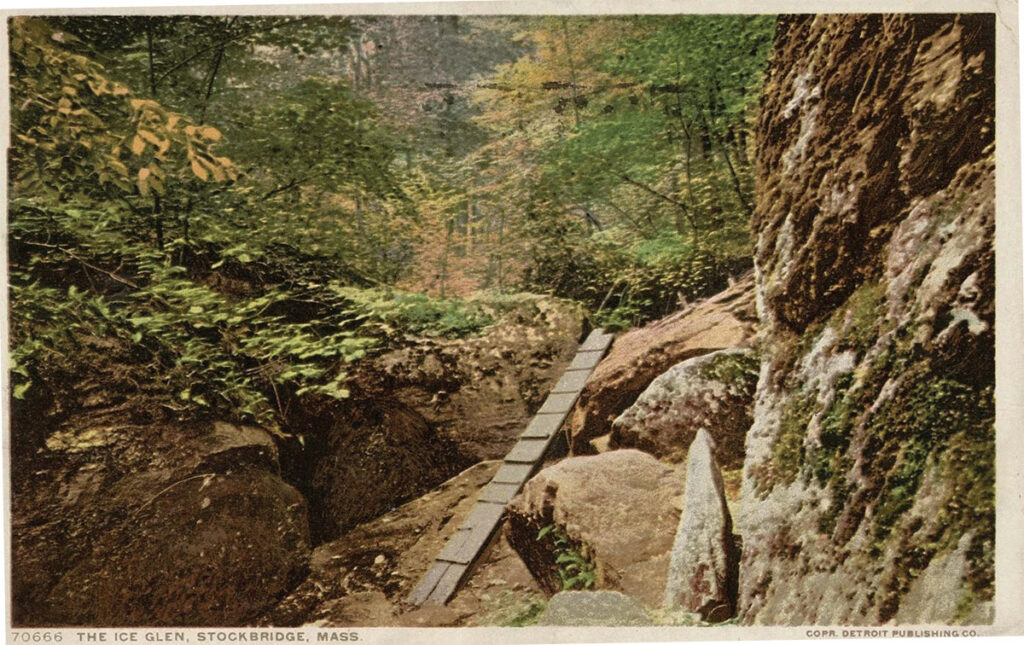
Stockbridge Library, Museum & Archives
While the ice-harvesting industry ended in the late-1940s with the advent of electrical refrigeration, Ice Glen continues to draw visitors from all around the world, particularly during the annual torch-light parades.
Ice Harvesting: The Schneyer Ice Company of Stockbridge, MA (1876-1946)
Text that follows is excerpted from “Ice Harvesting” by Maria Carr Now and Then Newsletter, January 2015
For many of us, refrigeration has always been as simple as purchasing a “Maytag” and paying the electric bill. But there are some people who still remember the days when refrigeration came in the form of the ice boxes and ice houses stocked full of large natural ice blocks using a labor-intensive process called ice harvesting.
The insulated icebox was patented in 1803, and it remained a mainstay in households through the late 1940s. Locally, the ice industry flourished, and the Schneyer Ice Company was one of the area’s major ice harvesting businesses.
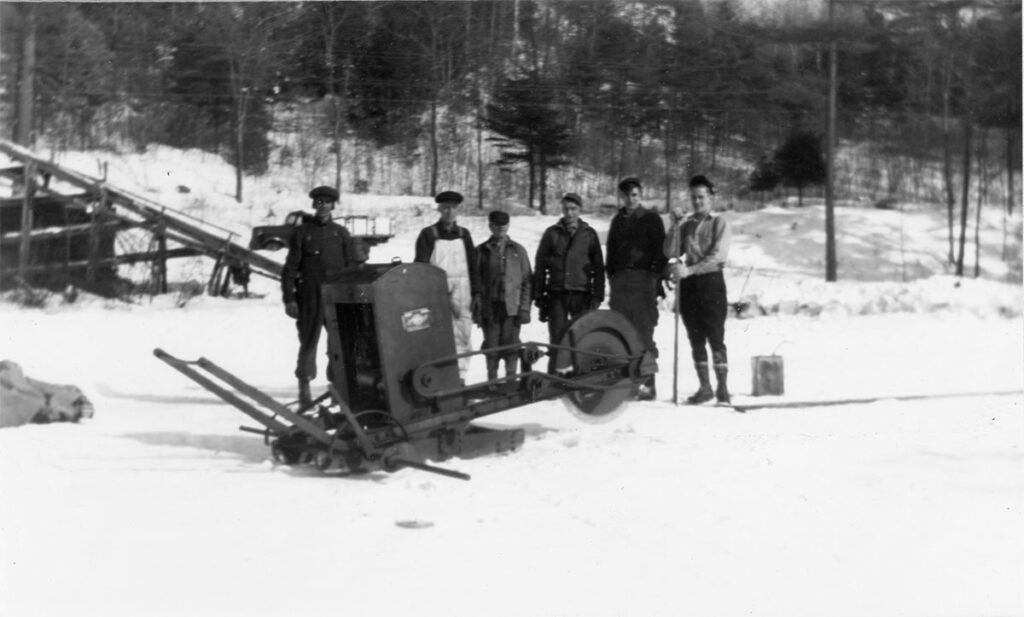
J. Hall images
In 1986, the Berkshire Eagle reported:
“The Schneyer family emigrated to Stockbridge from Germany in the 1800s and set to work harvesting ice from the [Mohawk] lake each winter from 1876 until the early 1950s. The Schneyers covered the ice with sawdust and stored it in a big shed beside the lake until summer, when it was hauled by horse-drawn wagons and later by trucks to customers’ houses and stores.” 2
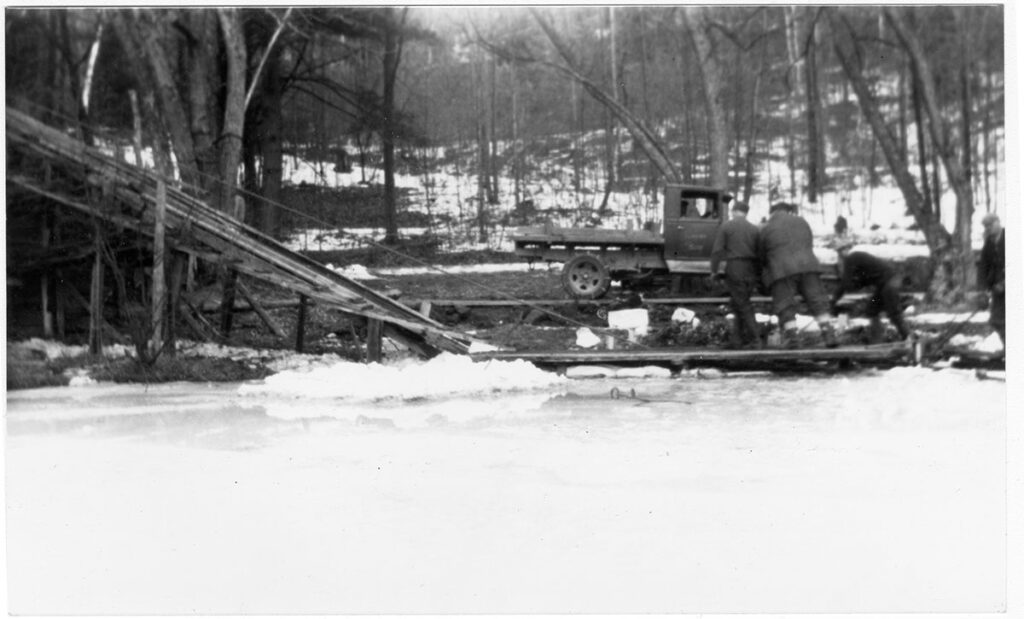
J. Hall images
In its heyday, the Schneyer Ice Company employed a crew of 20 men with 38 teams of horses to harvest ice when it was at least a foot thick. At one point the company harvested as much as 30,000 pounds of ice each year from Mohawk Lake.
George Schneyer ran the operations until the early 1940s, celebrating 65 years in the business in 1941. He stepped down due to ill health and eventually his three sons, Walter, Clifford, and Charles inherited the business. By 1946, Charles Schneyer and his son, Clyde assumed the business and renamed it Charles Schneyer & Son, although it closed several years later.
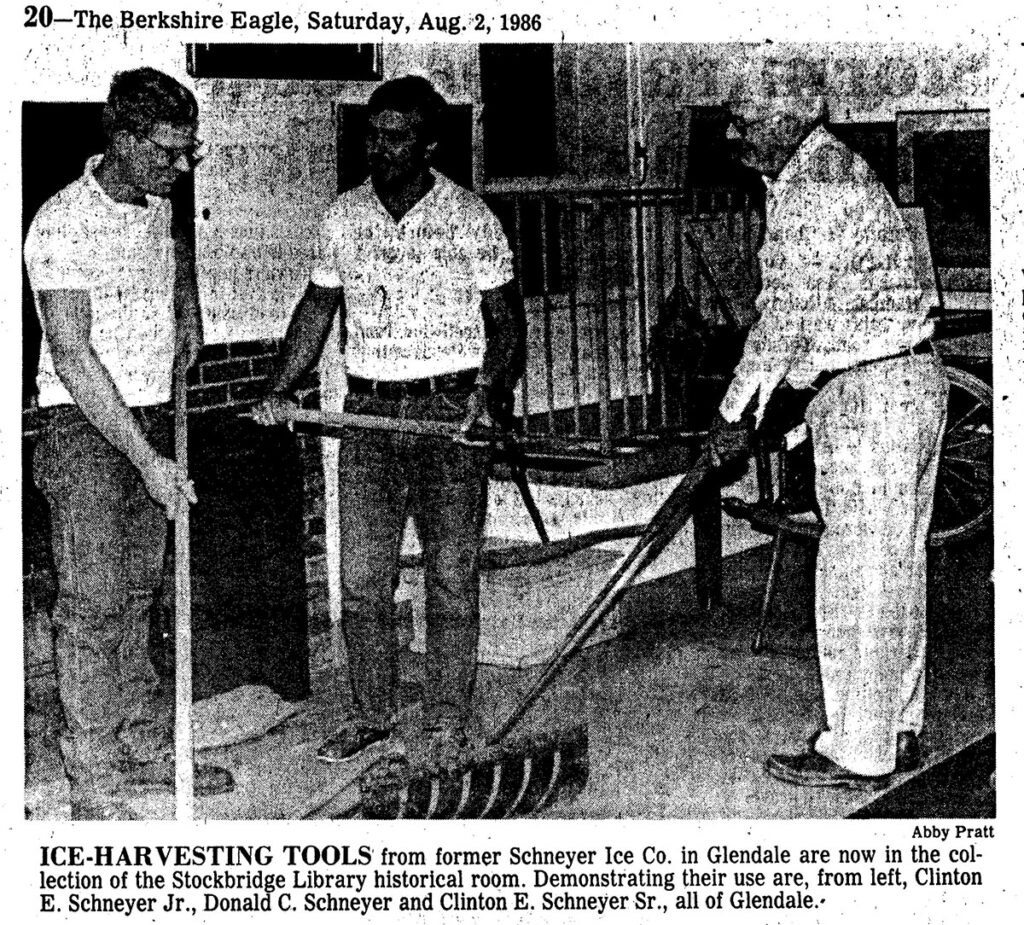
The Berkshire Eagle, Saturday, August 2, 1986
In 1986 the Schneyer family donated a collection of ice-harvesting tools to The Stockbridge Library, Museum & Archives. These items include a scale (used to weigh ice blocks), wedge cutters (used to delineate the ice field), a pipe or pike pole (used to push ice along a water channel in the lake), and a pair of ice tongs (used to remove broken ice chunks from the channel). As modern ice-manufacturing plants replaced natural ice harvesting, many of the ice houses along Mohawk Lake were torn down by the late 1940s.
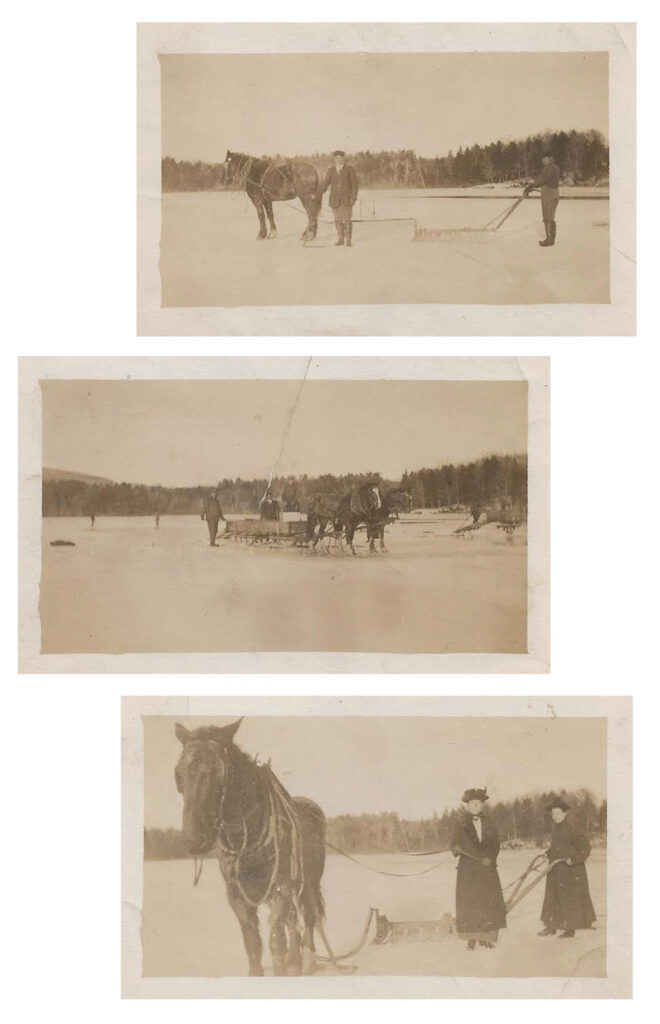
(Bessie & Lizzy Kickery, above), Ice Harvesting on Lake Averic (Echo Lake), Stockbridge, MA
Photographs courtesy of Maria Carr personal collection
Ice Glen of Stockbridge, MA
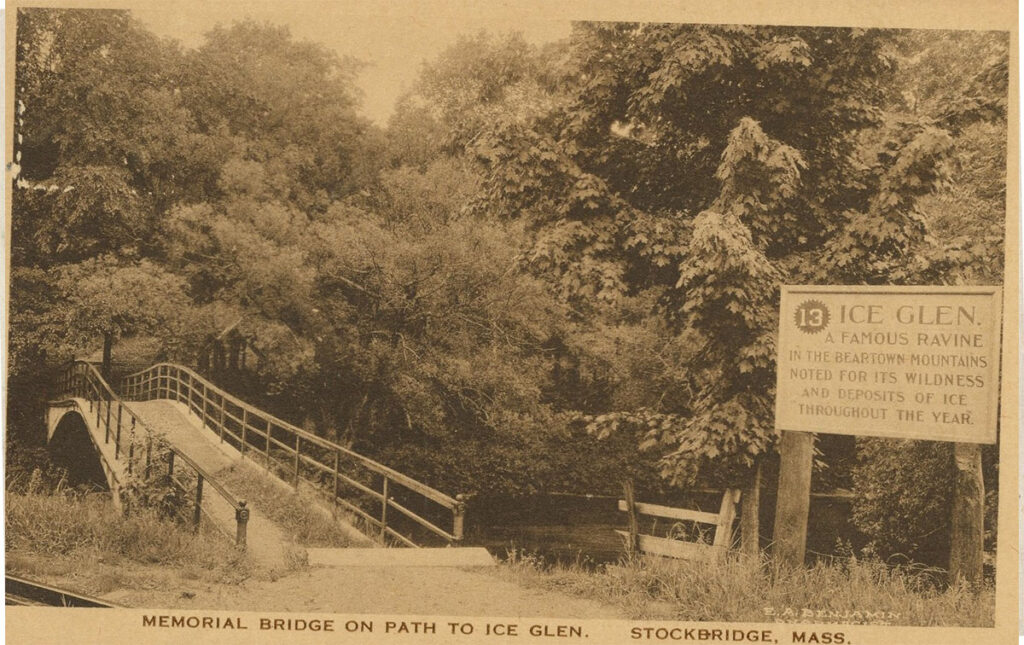
Stockbridge Library, Museum & Archives
For generations of Stockbridge residents, as well as for the passing hiker and geologist, the Ice Glen property has diverted people as well as kept one cool on the hottest of days.
Ice Glen, located on property owned and later donated by David Dudley Field, Jr. in 1891, has had a chilly history. Today, the property is owned by the Town of Stockbridge and cared for by the Laurel Hill Association. Formed through geological shifting thousands of years ago, Ice Glen is a glacial ravine formed by moving boulders during the last ice age. Because of its formation, the stones that create the Glen act as an insulator that cause not only a cool, refreshing breeze to blow from the entrance, but also makes it so one can find snow and ice deposits between the rocks well into May and June. Although Ice Glen’s early use by the native inhabitants of the area as a cool place to store food during the spring and summer months is one of speculation, Ice Glen boasts a rich history that goes back 180 years.
In the summer of 1841 Dr. Samuel Parker led a group of young boys through Ice Glen on an evening excursion. While walking through the glen an icy cool breeze blew out their torches, made for a difficult exit of Ice Glen and left a lasting impression on the boys as the experience played tricks with their imagination. Following that first documented trek through Ice Glen many others have followed in their footsteps, including Nathaniel Hawthorne.
His wife, Sophia, wrote of the experience:
“We went to a bridge where we would see the torchlight party come out of the Ice Glen and it looked as if a host of stars had fallen out of the sky and broken into pieces.” 3
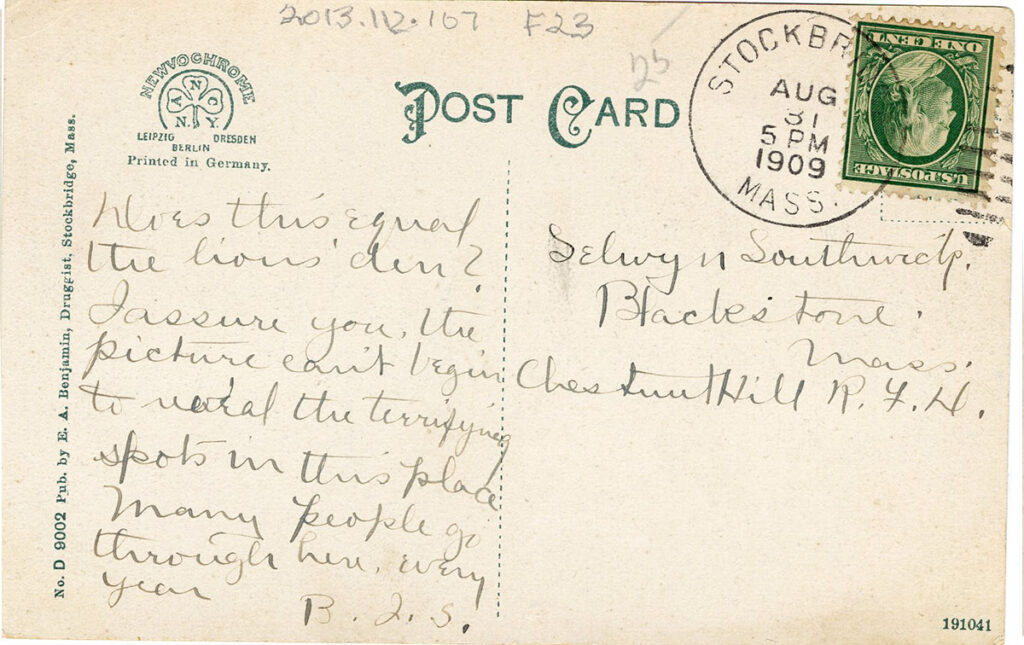
Stockbridge Library, Museum & Archives
Over the years, as more visitors made their way through Ice Glen, footings, boards, and railings were installed to assist people with the precarious climb. But by far the most memorable association with Ice Glen is the annual Ice Glen Procession.
The July 1895 edition of The Century Magazine stated:
“In point of seniority, the Ice Glen Procession at Stockbridge, Massachusetts, and the Tub Parade at Lenox should be awarded the first place among festival pageants of our country undertaken and carried out by the cultivated class of society.” 4
Over the years this event has taken place during the summer months and more recently in October around Halloween. What has not changed is the opportunity for individuals to dress up in costume, and with torches in hand, process through Ice Glen and then gather by the bonfire for talk and light refreshments.
Joshua Hall
Assistant Curator & Genealogist
Stockbridge Library, Museum & Archives
Acknowledgements
We want to thank Wendy Pearson, Library Director and Dennis Picard, Museum Professional. Special thanks to Stockbridge resident Maria Carr for sharing her insights into the history of ice harvesting in Stockbridge.
India Spartz, Curator
Joshua Hall, Assistant Curator
Stockbridge Library, Museum & Archives
References
1 Melville, Herman (1851). Moby Dick or the Whale. New York: Harper and Brothers. p. 500.
2 The Berkshire Eagle, “Gift to library recalls ‘ice age’”, August 2, 1986.
3 From: Morgan Bulkeley Sr., Berkshire Stories: “Ice Glen.”
4 Century Magazine. “American Rural Festivals.” July 1895, vol L, no. 3.

We’re more social than ever!
Join us on Instagram and Facebook for news, fun photos, and more!
Be in the know about events and news!
Get regular updates on library news and events delivered to your inbox!
Join the Mailing List